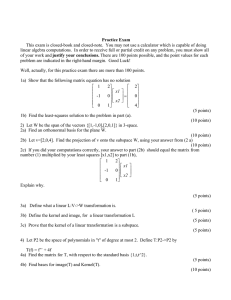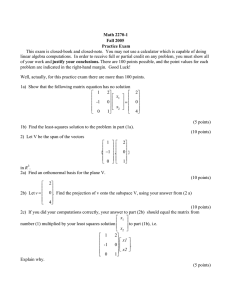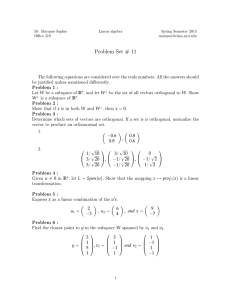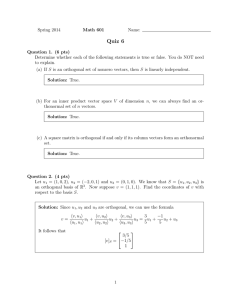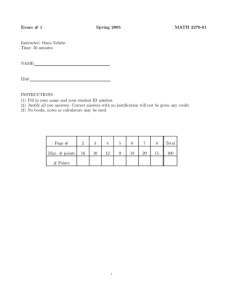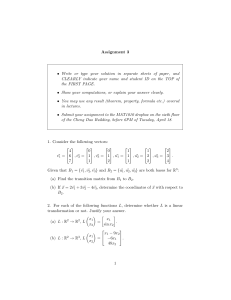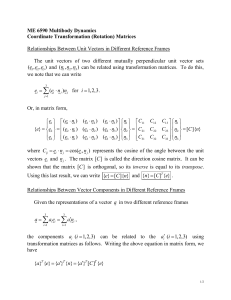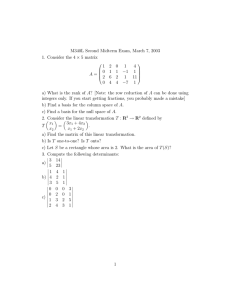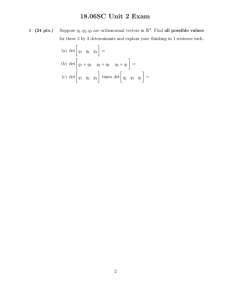Math 369, Sample Final Exam
advertisement
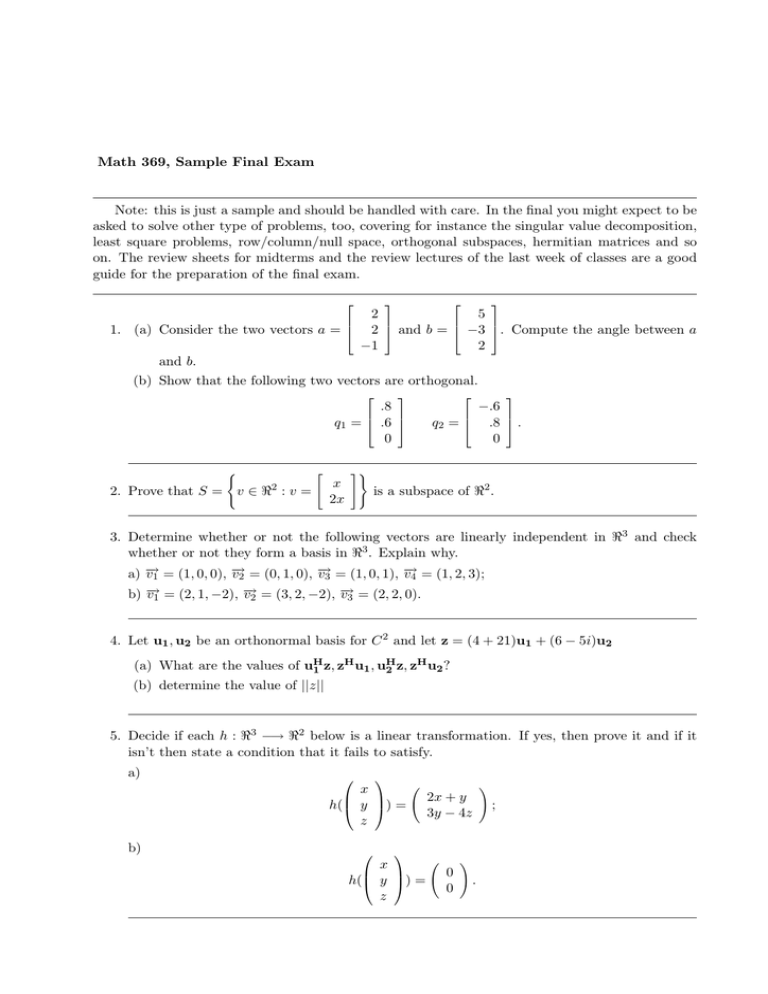
Math 369, Sample Final Exam
Note: this is just a sample and should be handled with care. In the final you might expect to be
asked to solve other type of problems, too, covering for instance the singular value decomposition,
least square problems, row/column/null space, orthogonal subspaces, hermitian matrices and so
on. The review sheets for midterms and the review lectures of the last week of classes are a good
guide for the preparation of the final exam.
2
5
1. (a) Consider the two vectors a = 2 and b = −3 . Compute the angle between a
−1
2
and b.
(b) Show that the following two vectors are orthogonal.
.8
q1 = .6
0
(
2. Prove that S =
"
v∈
<2
:v=
x
2x
−.6
q2 = .8 .
0
#)
is a subspace of <2 .
3. Determine whether or not the following vectors are linearly independent in <3 and check
whether or not they form a basis in <3 . Explain why.
→
→
→
→
a) −
v1 = (1, 0, 0), −
v2 = (0, 1, 0), −
v3 = (1, 0, 1), −
v4 = (1, 2, 3);
→
→
→
b) −
v1 = (2, 1, −2), −
v2 = (3, 2, −2), −
v3 = (2, 2, 0).
4. Let u1 , u2 be an orthonormal basis for C 2 and let z = (4 + 21)u1 + (6 − 5i)u2
H
H
H
(a) What are the values of uH
1 z, z u1 , u2 z, z u2 ?
(b) determine the value of ||z||
5. Decide if each h : <3 −→ <2 below is a linear transformation. If yes, then prove it and if it
isn’t then state a condition that it fails to satisfy.
a)
b)
Ã
!
x
2x + y
;
h( y ) =
3y − 4z
z
Ã
!
x
0
.
h( y ) =
0
z
6. Find an orthonormal basis for this subspace of <4
x
y
z
y
{
∈ <4 | x − y − z + w = 0, x + z = 0}
0 −1 0
7. Given A = 0 0 −1 find det(λI − A). Pick a, b and c such that
a b
c
det(λI − A) = λ3 − 21λ − 6.
8. Let T : R2 −→ R2 be the linear transformation defined as T (x, y) = (x + 2y, 3x + 2y)T . Let
E be the standard basis {(1, 0)T , (0, 1)T }, B the basis {u1 , u2 } = {(1, 3)T , (2, 5)T }
(a) Write down the matrix A representing T with respect to the standard basis E for R2
(b) Write down the matrix H representing T with respect to the basis B
(c) Using the matrix H find the coordinates of T (u1 + u2 ) with respect to the basis B
(d) Find the change of basis matrices A1 from basis E to basis B, and A2 from basis B to
basis E and verify that H = A1 AA2
"
9. (a) Given A =
−1 1
4 −1
#
, find det(λI − A).
(b) For each eigenvalue, find an eigenvector whose components are all integers. With these
eigenvectors, define a matrix S.
(c) Find the inverse of S.
(d) Diagonalize A with a similarity transformation.
(e) Using the results in (d), calculate A4 .

